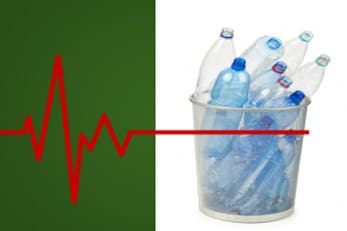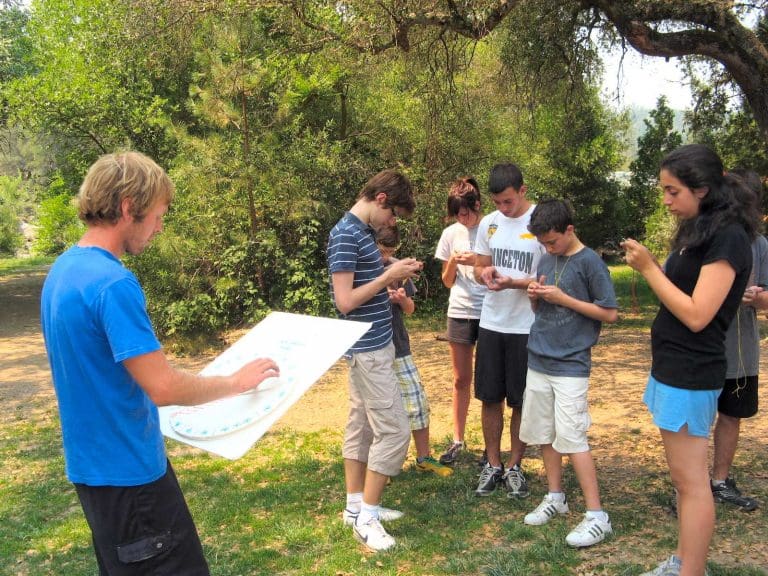Emily Underwood is now an editor for the American Academy of Science’s Annual Reviews Knowable magazine in addition to being a Mom, kayaker, river guide and avid river lover. Here are her thoughts from 2016 while at the High Country News about bottled water which—- ‘has never made sense. The fact is it has always been an elaborate PR scam, both an invented necessity and a bizarre symbol of luxury. Nevertheless, I buy bottled water sometimes, especially on long car trips. When I do, I often buy “Fiji” water. I don’t know why. I just like its square shape, snazzy palm frond label, and the frosty coolness as I pull it out of the service station refrigerator.
Every bottled water company has a special spin: Evian has tried for years now to convince us that drinking its bottled water will make us thin and sophisticated, possibly even French. Dasani, by Coca Cola, goes for mystery with its shapely blue bottle and “mouthwatering” mineral formula. Nestle’s brand name, Pure Life, shares its name with a prominent Christian group whose mission is to deliver believers from sexual sin.
Something all the bottled water companies have in common these days, however, is aggressive greenwashing. It turns out Fiji runs one of the most surreal and manipulative of the campaigns.
“We are proud to offer a fine artesian water that is good for people and good for the environment,” they say. Nonsense. A recent study by the Pacific Institute, Energy Implications of Bottled Water has forever ruined Fiji water for me.
The study, published in the February 2009 peer-reviewed Environmental Research Letters, finds that bottled water takes *up to 2000 times more energy* to produce than drinking water from the tap. The two biggest energy sucks are production of the bottles (it takes the energetic equivalent of 50 million barrels of oil per year to produce the bottles) and transportation of the bottles to their final destination.
“Artesian” means that Fiji water is from an authentic spring– and the spring is indeed on the island of Fiji. The company has promised to reduce its emissions and packaging, use more renewable energy, and use carbon offsets, as well as protect their source’s watershed, the Sovi Basin Rainforest. They have even set the goal of becoming carbon negative…someday.
However, none of those intentions can diminish the fact that Fiji bottled water travels over 5000 miles by air or boat to get to San Francisco. Fiji can’t realistically claim to be any more environmentally responsible than companies who transport water a shorter distance. And they don’t come close to being as green as municipal water, which skips the carbon-heavy bottles altogether.
To say Fiji water is “good” for the environment is quite a stretch. There is also the question of resource allocation–the island of Fiji is historically vulnerable to catastrophic drought. In past decades Fijian farmers have starved because there wasn’t enough water for irrigation, which calls into question the wisdom of shipping Fijian water overseas to be sold as a luxury item. (For a thoughtful discussion of the impact of the bottled water industry on communities in the U.S., see Christina Ammons’ 2007 HCN story, “Watershed Moment” about the controversy surrounding Nestle’s bottling enterprise in McCloud, California.)
Finally, there is little evidence to support the idea that bottled water is any better for you than tap water. Food and Water Watch in their aggressive anti-bottled water and anti-water privatization campaign, point out that quality testing standards are far less stringent for bottled water than for municipal supplies. For example, whereas municipal water must be tested for fecal coliform bacteria 100 times per month, a little over 3 times a day, bottled water plants only have to check once a week. A study by the Natural Resources Defense Council found more than the allowed amount of bacteria in more than one fifth of 103 tested brands. And bottled water, unlike constantly moving municipal water, is stagnant, and therefore more conducive to bacterial replication.
Americans spent $11 billion on bottled water in 2006, and drank over 33 billion liters in 2007, which works out to about 30 gallons per person. The rising rate of consumption speaks to the success of bottled water company PR campaigns.
More seriously, however, it reflects Americans’ fundamental distrust of public water systems. Concerns about deteriorating public water infrastructure, and trace contaminants that the EPA doesn’t regulate are harder to dispel than misleading advertisements. $6 billion of the stimulus package was set aside for local clean and drinking water infrastructure improvements, which have been neglected for far too long. But it will take more than infrastructure improvements to regain America’s trust in the tap.
For one thing, we need better risk assessment. Reverse osmosis, which forces water through a selectively-permeable membrane, is theoretically the best technology for purification, and companies like Aquafina and Dasani use it in their plants. However, it is also the most energy-intensive form of purification, and is no real guarantee of quality since the membranes themselves are susceptible to bacterial colonization.
In the long run, we can’t afford the bottled water solution socially, environmentally, or economically. We need better information about how much purification is actually necessary for health, and then we need to find ways to make that technology efficient and affordable to use in our public systems. Otherwise, we will be increasingly forced to drink water that isn’t significantly safer, but still costs us more than gasoline. And those of us who can’t afford bottled water will be stuck with a broken system– a situation reminiscent of Marie Antoinette’s disastrous pronouncement, “Let them eat cake.” Except this time it will be, “Let them drink Perrier.”
Cheers from Colorado,
Emily












